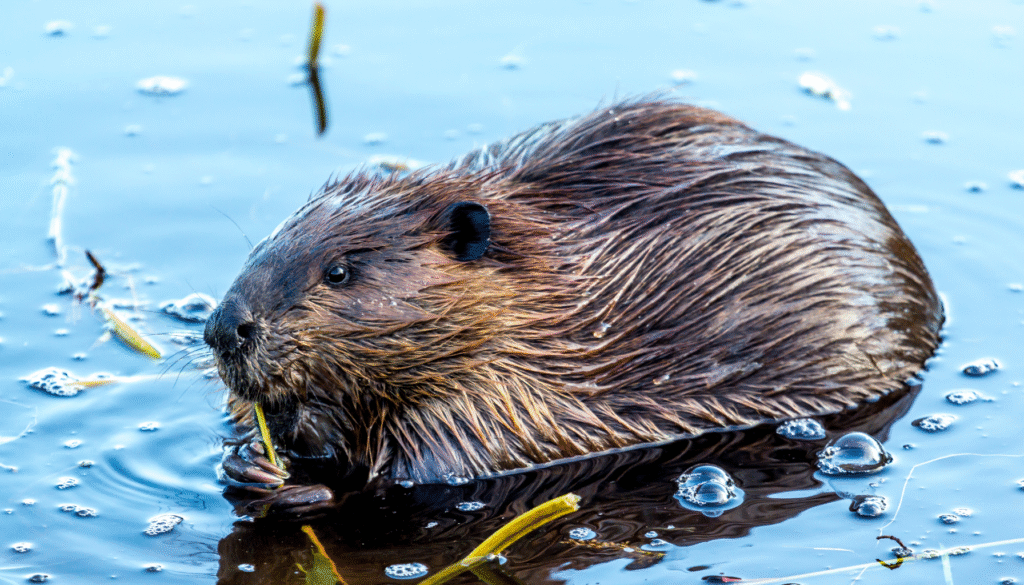In the heart of the forest or along a quiet riverbank, you might stumble upon a dam—not made by humans, but by one of nature’s most skilled and strategic builders: the beaver. Armed with powerful teeth, instinctive knowledge, and a work ethic that would put most of us to shame, beavers build structures that transform entire landscapes—creating wetlands, altering rivers, and supporting hundreds of species.
But how do these chubby little rodents become world-class engineers? Let’s explore what makes beavers such brilliant builders—and why the ecosystems they create are vital for the planet.
1. Who Are the Beavers?
Beavers are large, semi-aquatic rodents found in North America and parts of Europe and Asia.
Key facts:
- Second-largest rodent in the world (after the capybara)
- Webbed feet and a flat tail for swimming
- Orange, iron-rich teeth that never stop growing
- Herbivores, feeding mostly on bark, twigs, and aquatic plants
But their most iconic feature? They build. And they don’t stop.
2. Why Do Beavers Build Dams?
Beavers build dams not for fun—but for survival.
Their goal is to:
- Create deep water ponds where they’re safe from predators
- Build lodges in the center for shelter and raising young
- Maintain access to food even in winter
Dams slow down flowing rivers, flooding surrounding land to form protective wetlands.
For beavers, it’s not just a structure—it’s a life support system.
3. The Construction Process: How Beavers Build
Beavers are born with an instinct to build, but the technique is surprisingly sophisticated:
Materials used:
- Logs and branches (cut down with their teeth!)
- Mud, rocks, grass, and leaves
- Anything they can drag, carry, or float
Steps:
- Locate flowing water
- Pile up logs across the stream
- Reinforce with mud and plants to seal gaps
- Expand and maintain over time as water pressure changes
The result? A strong, waterproof dam—sometimes several meters long and used for decades!
4. Beaver Lodges: The Ultimate Natural Home
Behind the dam, beavers build lodges—dome-shaped structures with underwater entrances that lead to dry living chambers.
Features:
- Waterproof and insulated
- Built for safety from predators
- Often house entire families for generations
- Include ventilation holes at the top!
It’s cozy, protected, and brilliantly designed. Some even have two levels—a dry one and a damp one for food storage.
5. Beavers as Ecosystem Engineers
Beavers don’t just shape their own homes—they reshape entire ecosystems.
Their dams:
- Create wetlands that support frogs, fish, birds, and insects
- Store water during droughts
- Prevent erosion by slowing water flow
- Improve water quality by filtering sediment and toxins
Scientists call beavers “keystone species”—because when they build, entire ecosystems benefit.
6. Amazing Beaver Feats
Beavers have pulled off some impressive construction over the years:
- The longest beaver dam in the world is over 850 meters (2,790 feet) long, visible from space, and located in Alberta, Canada!
- Beavers can move wood pieces heavier than themselves
- Their dams can last decades if well maintained
These animals are problem-solvers, working tirelessly and adapting to challenges in real time.
7. Beavers and Climate Change
In recent years, conservationists have begun reintroducing beavers to areas where they were once extinct.
Why?
- Their wetlands store carbon
- They reduce flooding by controlling water flow
- Their ponds recharge groundwater
- Their activity slows down wildfires by keeping the land moist
Some even call them climate heroes in fur coats.
Final Thoughts: Builders With a Big Impact
Beavers don’t use blueprints. They don’t go to engineering school. But what they build can be seen from satellites, change landscapes, and support entire ecosystems.
They’re nature’s architects, working not for money or glory—but because it’s in their DNA.
In a world where so many environments are in crisis, perhaps one of the most powerful restoration tools isn’t a machine—but a determined rodent with orange teeth.Next time you see a dam, don’t assume it was man-made. It might just be the work of a beaver—the best engineer nature ever trained.



